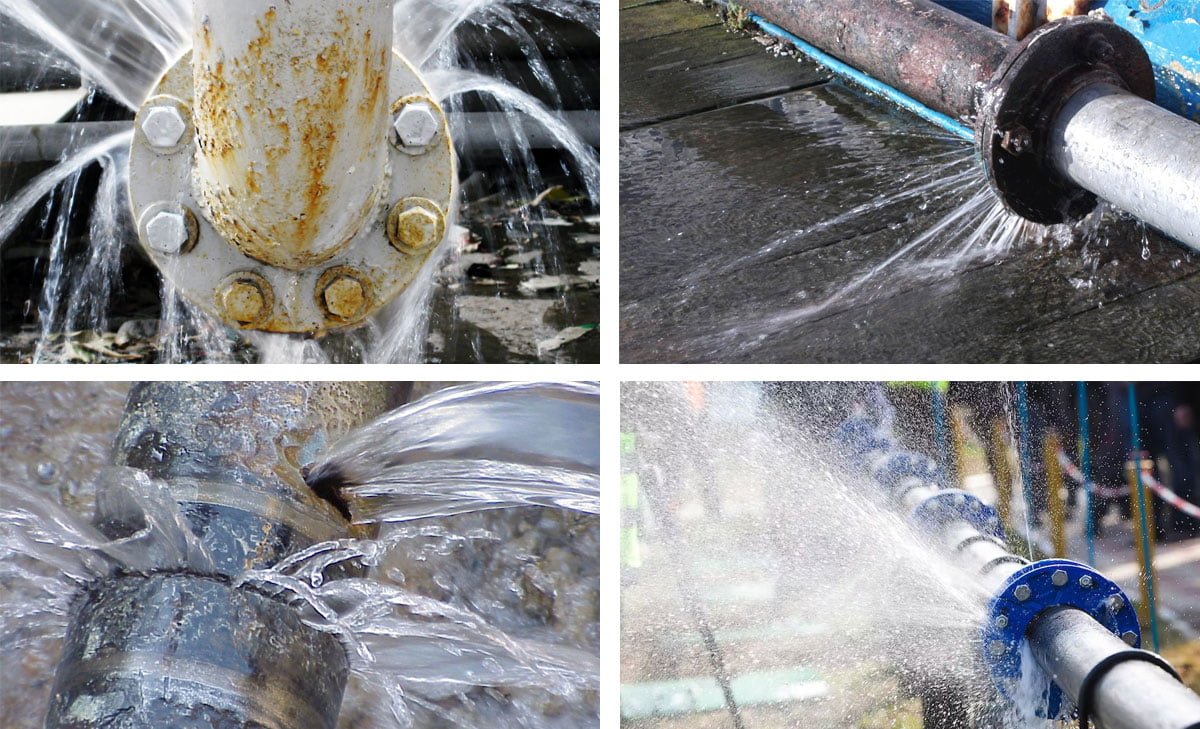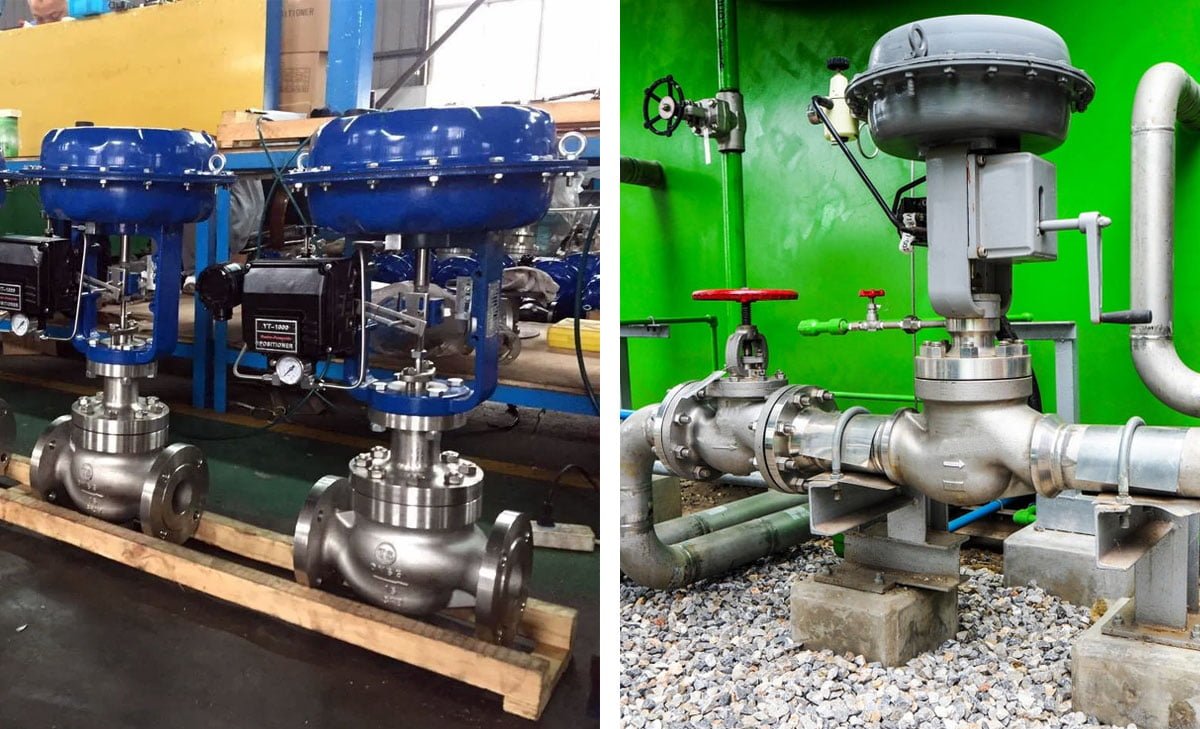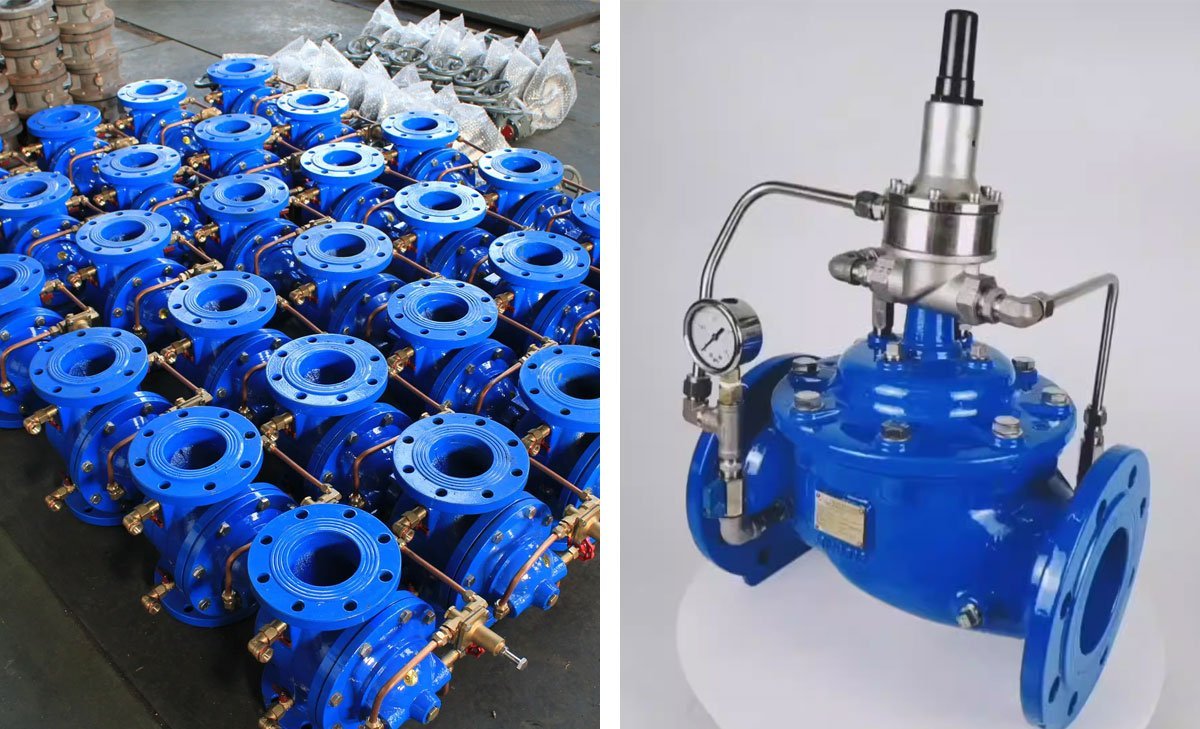The Role of Pressure Sustaining Valves in Preventing Water Hammer in Municipal Water Systems

Table of Contents
ToggleUnderstanding the Function of Pressure Sustaining Valves in Water Systems
Pressure sustaining valves play a pivotal role in municipal water systems by regulating water pressure to prevent the occurrence of water hammer. Their precise function in controlling the flow and pressure of water within the system is vital for ensuring the smooth and safe operation of the infrastructure.
Municipal water systems are susceptible to a common problem known as water hammer, which can lead to high-pressure shock waves in incompressible fluids. This phenomenon occurs when a liquid is abruptly forced to stop in a pipe, resulting in a thumping or banging noise. Water hammer can be triggered by various actions involving water, such as shutting off valves or sudden pump shutdowns. The risks of water hammer are especially high when fluid velocity is elevated, a large mass of fluid is in motion, or significant elevation changes occur within the piping system. The resulting hydraulic shock can cause widespread and long-lasting damage to system components.
In preventing water hammer, the type of valve used in a piping system plays a crucial role. For instance, swing check valves, a commonly used design, rely on fluid flow to close, causing abrupt flow stoppage and resulting in pressure surges. However, DFT axial flow silent check valves offer a solution to this issue.
Water Hammer in Municipal Water Systems
Water hammer is a hydraulic shockwave that occurs in piping systems when the flow of liquids is suddenly disrupted or forced to change direction. This phenomenon can occur when a valve is abruptly closed or when a pump instantly shuts down, causing a high-pressure shockwave to propagate through the piping system.
Definition and Causes of Water Hammer
The impact of water hammer on water infrastructure can be substantial, leading to pressure spikes that exceed ten times the working pressure of the system. This sudden increase in pressure can cause severe damage to pumps, valves, instruments, gasketed joints, expansion joints, and pipe walls. Furthermore, it can result in leaks, ruptured pipelines, and extensive external property damage.
Impact of Water Hammer on Water Infrastructure
Real-life examples of water hammer damage include repeated damage to pumps, valves, and instruments, as well as the catastrophic failure of gasketed joints and expansion joints. Additionally, water hammer can lead to the integrity of pipe walls and welded joints being compromised, resulting in leaks that may start slowly and intensify over time. Ruptured pipelines due to pressure spikes are especially expensive to repair and can cause extensive damage to the entire system and other equipment. If left unchecked, water leaks can lead to significant external property damage.

Real-Life Examples of Water Hammer Damage
Water hammer damage can occur in various real-life scenarios, such as in residential plumbing systems, industrial pipelines, and municipal water supply networks. In residential settings, water hammer can lead to burst pipes, damaged valves, and compromised fixtures. In industrial environments, the sudden pressure surges caused by water hammer can result in structural damage, equipment failure, and safety hazards for workers. In municipal water supply systems, water hammer can cause pipeline ruptures, water leaks, and service disruptions for consumers. These real-life examples highlight the detrimental effects of water hammer and underscore the importance of implementing mitigation measures to prevent costly damage and ensure the reliable operation of water systems.
Pressure Sustaining Valves Explained
- Pressure Sustaining Valves are devices used to maintain a minimum upstream pressure in a pipeline.
- These valves are designed to open when the upstream pressure drops below the setpoint and close when the pressure reaches the desired level.
- Pressure Sustaining Valves are crucial in preventing pipeline collapse or cavitation by maintaining a constant pressure in the system.
- They are commonly used in water distribution systems, irrigation systems, and fire protection systems to ensure consistent water pressure.
- These valves come in various types such as pilot-operated, direct-acting, and differential area valves, each suited for different applications and pressure ranges.
- Proper maintenance and periodic inspections are necessary to ensure the efficient and reliable operation of Pressure Sustaining Valves.
- When selecting a Pressure Sustaining Valve, factors such as flow rate, pressure range, material compatibility, and system requirements should be carefully considered to ensure optimal performance.
What is a pressure sustaining valve
A pressure sustaining valve is a crucial component in a municipal water system, designed to regulate and maintain a specific level of pressure within the system. It ensures that the pressure does not exceed certain limits, preventing potential damages and ensuring consistent water flow.
Function of Pressure Sustaining Valves
The primary function of pressure sustaining valves is to stabilize the pressure in water distribution networks. They achieve this by automatically adjusting the valve position to maintain the desired pressure range, regardless of fluctuating demands or inlet pressures. This ensures that the water supply remains reliable and consistent for end-users.
Types of Pressure Sustaining Valves
There are several types of pressure sustaining valves, each catering to specific operational requirements. These include direct-acting valves, pilot-operated valves, and altitude valves. Direct-acting valves offer simplicity and reliability, while pilot-operated valves provide enhanced control and accuracy. Altitude valves are utilized in elevated storage tanks, controlling the water level and pressure in those systems.
Installation and Placement in Water Systems
Pressure sustaining valves are strategically installed at key points in the water distribution network. They are commonly placed at critical junctions, pump stations, or reservoirs where pressure regulation is essential. Proper installation and placement ensure effective pressure management throughout the system, minimizing the risk of water hammer and other related issues.
By incorporating pressure sustaining valves into municipal water systems, water authorities can effectively mitigate the impact of water hammer, ensuring the overall stability and efficiency of the water supply network.
The Mechanism of Pressure Sustaining Valves Against Water Hammer
How Does a Pressure Sustaining Valve Work?
A pressure sustaining valve is designed to maintain a predefined pressure in a water system by modulating the flow of water. It consists of a control chamber, a diaphragm, and a pilot control system. When the pressure exceeds the set limit, the pilot control system opens the valve, allowing excess water to flow out. Conversely, when the pressure drops below the set limit, the valve closes to maintain the intended pressure.
How Pressure Sustaining Valves Absorb Shock
Water hammer occurs when the flow of water is suddenly disrupted, causing a shock wave to propagate through the system. Pressure sustaining valves absorb this shock by controlling the rate of flow, minimizing the sudden changes in pressure that lead to water hammer. Their ability to regulate pressure variations prevents the shock wave from being transmitted through the system, mitigating the damaging effects of water hammer.
The Role of Valve Opening and Closing Speeds
The speed at which pressure sustaining valves open and close is crucial in preventing water hammer. Rapid closure can create an abrupt change in flow, potentially leading to water hammer. Conversely, slow closure may allow pressure to build up, also contributing to water hammer. Therefore, the optimal opening and closing speeds of pressure sustaining valves are carefully calibrated to effectively manage pressure fluctuations and prevent water hammer.
Pressure Sustaining Valves vs. Other Anti-Water Hammer Solutions
While other anti-water hammer solutions, such as surge tanks and air chambers, offer some level of protection, pressure sustaining valves are particularly effective due to their ability to actively regulate pressure. Unlike surge tanks that passively absorb pressure surges or air chambers that require precise sizing and maintenance, pressure sustaining valves provide a dynamic and reliable solution for preventing water hammer in municipal water systems.

Benefits of Using Pressure Sustaining Valves
Extended Lifespan of Water System Components
Pressure sustaining valves play a crucial role in maintaining the longevity of municipal water systems. By regulating pressure surges and preventing water hammer, these valves protect pipes, fittings, and other components from the damaging effects of abrupt pressure changes. As a result, the overall lifespan of the water distribution system is significantly extended, reducing the frequency of replacements and repairs.
Maintaining Consistent Water Pressure for Consumers
One of the key advantages of utilizing pressure sustaining valves is the ability to ensure consistent water pressure for consumers. By mitigating the impact of pressure variations, these valves contribute to a more reliable and stable water supply, ultimately enhancing customer satisfaction. Consistent water pressure also minimizes the risk of fluctuations that could compromise the performance of household appliances and plumbing fixtures.
Cost Savings from Reduced Maintenance and Repairs
Incorporating pressure sustaining valves into municipal water systems leads to notable cost savings through reduced maintenance and repairs. By preventing water hammer and pressure-related damages, these valves diminish the need for frequent interventions and replacements, effectively minimizing operational expenses. Additionally, the avoidance of abrupt pressure fluctuations can help decrease the likelihood of emergency repairs, optimizing the overall financial efficiency of the water distribution infrastructure.
Case Studies: Success Stories in Municipal Water Systems
Municipal water systems across various cities and regions have witnessed significant improvements with the implementation of pressure sustaining valves (PSVs). These case studies showcase the effectiveness of integrating PSVs and provide valuable insights into the outcomes, performance, lessons learned, and best practices.
Cities That Implemented Pressure Sustaining Valves
- City A: City A’s water distribution network faced recurring challenges of water hammer and pressure fluctuations, leading to frequent pipe bursts and infrastructure damage. Following the installation of PSVs at critical points in the system, the city experienced a notable reduction in water hammer incidents and maintained stable water pressure levels.
- City B: In response to water hammer issues affecting the integrity of their water infrastructure, City B integrated PSVs into their distribution network. The implementation resulted in a remarkable decrease in pressure transients, ensuring the longevity of the system and a substantial reduction in maintenance costs.
Outcomes and Performance After Installation
After the integration of PSVs, these cities observed substantial improvements in the performance of their municipal water systems:
- Reduction in Water Hammer Incidents: The occurrence of water hammer, a primary concern for many water systems, significantly decreased post-PSV installation, leading to enhanced system stability and reduced operational disruptions.
- Enhanced Pressure Regulation: The precise control offered by PSVs contributed to consistent and optimized water pressure levels, mitigating the risks associated with high pressures and fluctuations.
Lessons Learned and Best Practices of Pressure Sustaining Valves
From these success stories, several key lessons and best practices have emerged for municipalities considering the implementation of PSVs:
- Strategic Placement: Identifying critical points within the water distribution network for PSV installation is crucial to effectively attenuate pressure transients and safeguard the infrastructure.
- Routine Monitoring and Maintenance: Regular inspection and maintenance of PSVs are essential to ensure their continued efficacy in mitigating water hammer and maintaining optimal pressure levels.
- Collaborative Planning: Involving experienced engineering and infrastructure teams in the planning and implementation of PSV initiatives fosters comprehensive solutions tailored to the specific needs and challenges of a municipal water system.
These case studies exemplify the tangible benefits of incorporating PSVs in municipal water systems, offering valuable guidance for other cities aiming to address water hammer and pressure management concerns.
Challenges and Considerations for Pressure Sustaining Valves
Selecting the Right Valve for Your Water System
When it comes to preventing water hammer in municipal water systems, selecting the right pressure-sustaining valve is crucial. Consider factors such as the water flow rate, pressure fluctuations, and the size of the system. Different valves are designed for specific applications, so it’s important to choose one that aligns with the unique requirements of your water system. Factors such as valve type, pressure ratings, and material composition should be carefully evaluated to ensure optimal performance and longevity.
Common Installation Challenges
Installation of pressure-sustaining valves can present various challenges, including proper sizing, positioning, and integration with existing infrastructure. It’s essential to address potential issues such as pipe orientation, flow direction, and access for maintenance. Additionally, ensuring accurate pressure settings and alignment with system specifications is vital for seamless integration. Proper planning and collaboration with experienced professionals are necessary to overcome potential installation obstacles and ensure the effective operation of the valve.
Maintenance Requirements for Optimal Performance
Maintaining pressure-sustaining valves is essential for long-term performance and the prevention of water hammer. Regular inspection of valve components, such as seals, springs, and control mechanisms, is necessary to detect and address potential issues. Additionally, monitoring valve performance through pressure testing and flow analysis can help identify early signs of wear or malfunction. Establishing a proactive maintenance schedule and adhering to manufacturer guidelines can significantly contribute to the optimal performance and longevity of pressure-sustaining valves in municipal water systems.
Conclusion
In municipal water systems, the prevention of water hammer is crucial for maintaining the integrity and longevity of the infrastructure. Pressure sustaining valves, such as the DFT Axial Flow Silent Check Valves, play a vital role in mitigating the risks associated with water hammer. By allowing for a controlled and gradual closure, these valves effectively minimize the potential for hydraulic shock and its damaging effects on the system. Incorporating the right valve technologies can significantly enhance the overall operational efficiency and safety of municipal water systems, making them more resilient against the detrimental impact of water hammer.













